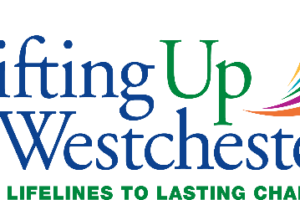 At the rate things are going, in a few years Village government duties in the Rivertowns may consist solely of collecting taxes from the populace to pay health insurance companies, banks who own village debt, and pension funds. “It’s like the story that you hear where Starbucks pays more for Health Insurance than they do for coffee,” laments Irvington Village Administrator Lawrence Schopfer.
At the rate things are going, in a few years Village government duties in the Rivertowns may consist solely of collecting taxes from the populace to pay health insurance companies, banks who own village debt, and pension funds. “It’s like the story that you hear where Starbucks pays more for Health Insurance than they do for coffee,” laments Irvington Village Administrator Lawrence Schopfer.
[inset side=left]Total outstanding debts for the Villages at this time.
Irvington – $11,817,000
Tarrytown – $40,796,740
Sleepy Hollow – $18,176,000[/inset]While the above scenario may be a bit dramatic, the truth is that continually rising costs in health insurance and pension contributions, combined with declining revenue from lower assessables is putting the squeeze on village budgets up and down the river, and despite the valiant efforts of village administrations, services are being affected.
Irvington
This year’s budget increases Village taxes by 4.53%. A large rise, to be sure, but on par with neighboring communities and less than half of what it could have been for a general operating budget that rose to $15,228,550 from last year’s total of $14,835,662. “We started out the process in September, and the projected tax increase at that time was about 10.25%. Since then, we’ve done a lot of work, got it down to where we are, and did it without really significant cuts in service,” says Schopfer. “There are certainly cutbacks in the library — not affecting their hours… there are certainly significant cuts in the recreation
department and also increases in the fees that they charge for their various programs. Obviously you have the reduction in the staff of the public works department, making things more difficult in terms of the amount of work we can get done, but we’re doing the best we can there.”
Schopfer does not mince words when it comes to naming the cost drivers in this year’s budget. “The two main items are the increase in pension contributions and the increase in health insurance.” Pension contributions alone rose by over $200,000. To make room, the Village reduced funding in the recreation department by about $150,000, and took advantage of early retirement incentives in the public works department to cut out an additional $260,000.
No other areas of the Village were forced to deal with staff reductions this year, but the reprieve may be short lived. “I think what the Board has recognized is that the cost of our personnel is going higher and higher,” says Schopfer. “Many times people say that the costs… of health insurance and pension are out of our control. That’s only partially true. They’re out of our control in terms of how the rates get set, but we do have some measure of control in terms of what level of staffing we have, and that’s something we have to continually look at.”
Still, Schopfer remains hopeful that there is light at the end of the tunnel. “I have to say, I think we’re reaching the upper end of the range of pension contribution rates,” he says. “I think we’re on the high side of what’s expected in terms of future contribution rates. Of course, I say that without knowing what they’re going to set it at next year. A lot of what they set it at is dependent on how well their investments perform. Significant downturns in the market can completely change what I just said.”
Tarrytown
The Village of Tarrytown worked hard on their budget, looking under every rock and stone for areas to snip and save. “We cut some personnel, cut some other expenses. Moved one expenditure from one fiscal year to another fiscal year,” says Village Administrator Michael Blau. “I think where we made cuts, we made cuts throughout. We didn’t pick on one particular department. The Board fully was cognizant of the fact that taxes are a major issue for everybody. They wanted to adopt a budget that was fair to the taxpayers but didn’t cut major services to the community.”
They ended up with a general fund budget of $20,166,772, which is actually a slight decrease from last year’s budget. So naturally, Village residents will be hit with a 4.55% tax increase. The reason? A loss of assessables.
According to Blau, the Village lost approximately $3,415,243 in assessables, which equates to $850,259 in lost revenue for the year, which put the Village in a deep hole starting out the budget process.
Not to say that the usual demons of pension costs and health insurance costs didn’t rear their ugly heads. Pension contribution costs for the Village rose $400,279 and health insurance costs climbed $250,847.
Mandated salary increases carved another $299,787 more out of the budget this year than last year as well. It all added up to a rough budget process.
“We started out with an actual loss of revenue of $850,000,” says Blau. “So, keeping that in mind, along with pension costs increase, along with health insurance costs increase, along with the increase in salaries for the unions which were coming into the last year of a four-year contract — if you add just those items up, you would have been looking at a tax rate increase of over 12%. Based upon that reality, we started cutting.”
Sleepy Hollow
The people of Sleepy Hollow win the award for the lowest tax increase of the three villages this year, as their Village taxes will only be rising 3.9%. The final budget for the general fund came in at $13,553,482, an increase from last year’s budget of $12,978,540.
“I think it’s a tight budget,” says Village Administrator Anthony Giaccio. “It represents some strict spending practices that the Board [of Trustees] has instilled over the last few years. It doesn’t represent any additional expenses for things that haven’t been in the budget in the past. It basically keeps everything status-quo. We have our hands tied because we have State mandates and we have our assessments going down which really affects our tax base.”
Here again, the usual villains of rising pension contribution costs, rising health insurance costs, and contractually-obligated salary increases wreaked their havoc on the budget process, forcing the Village to make some hard choices. One unfortunate victim of the budget process was the Village’s after-school program.
Looking ahead, Giaccio sees reason for guarded optimism. “We have two potential things that could change the [financial] circumstances here,” he says. “One is that we have a potential project down at the waterfront called The River’s Edge… that would increase our tax base. Then, of course, the other project looming is the General Motors redevelopment, but that might be a couple of years out.” Though it has not yet gone before the planning board, Giaccio says The River’s Edge could affect the Village as early as next year. “What we do receive out of that project earlier are the building department fees, which could be significant for a project that size.”
Even with the possible increase in revenue, the continual rise in health insurance and pension costs will likely make their wrath felt here as in the other Villages. Says Giaccio,“I think we’re going to be making difficult [budget] decisions for at least a couple of years.”
SIDEBAR:






